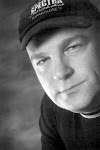This past Sunday we went out during the day to make some portraits. It was a bright sunny day with harsh lighting. Perfect, at least for what I wanted to show them. Most times we do not have a choice as to the time of the day we have to shoot or the lighting conditions that we work in. A large part of the course is about learning to manage and control all types of light to get the image we want. Bright sunny days are one of the most difficult situations to work with requiring an implicit understanding of your gear as well as the nature of light.
The first situation we set up was in the middle of a field. The sun is harsh and direct. For folks like me who are "follicular-ly challenged", one of the most important pieces of gear to have is a hat. I had misplaced mine and was starting to feel the sun on my scalp within minutes of being there. Today is Tuesday, I still feel the sun.
When creating a portrait, this type of lighting is considered to be the worst. Sunburn aside, the lighting on the face is harsh and unflattering, but, we were able to work through two techniques that got us reasonable portrait images.
 For both techniques, the first thing we did was place the subject between the camera and the sun. This did three things
For both techniques, the first thing we did was place the subject between the camera and the sun. This did three things- It got the harsh light off the subjects face and created separation by back lighting the subject.
- It created very flat lighting on the subjects face
- Created lens flare in our camera
Our first technique was to use a combination of scrims, reflectors, and gobo's. First we set up a white reflector to use a key light on our subject. The reflector was large enough to create a soft light source giving us the gentle shadow edge transfer that we like. The shadow side of the face was still very light so do darken it down we used a black gobo. We had the look we wanted on the face but the back light from the sun was burning out the hair and shoulders. A white scrim between the sun and the subject solved this problem.
Our second technique was to use a flash. The downside to using a flash in this situation is that you need one powerful enough to overpower the sun. The advantage is that you can control the exposure of your background relative to your subject by changing the shutter. In terms of flash placement, it needs to be off camera in order to get that wrap around look. In bright sunlight, shutter speeds will be high, so will need to place your flash on high speed sync. David Ziser on his blog, Digital Pro Talk, has some fantastic examples and explanations for this technique that you can check out here.
Open shade is often a more desirable place to take portraits and will be the topic of my next blog.




